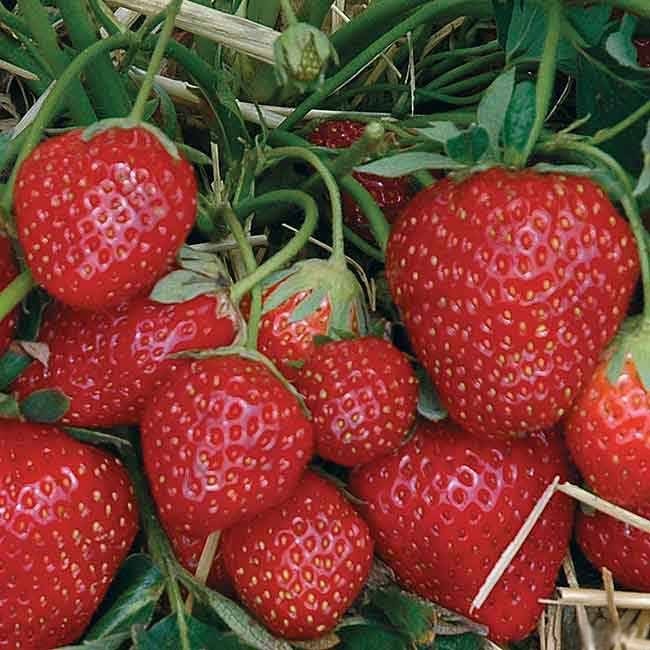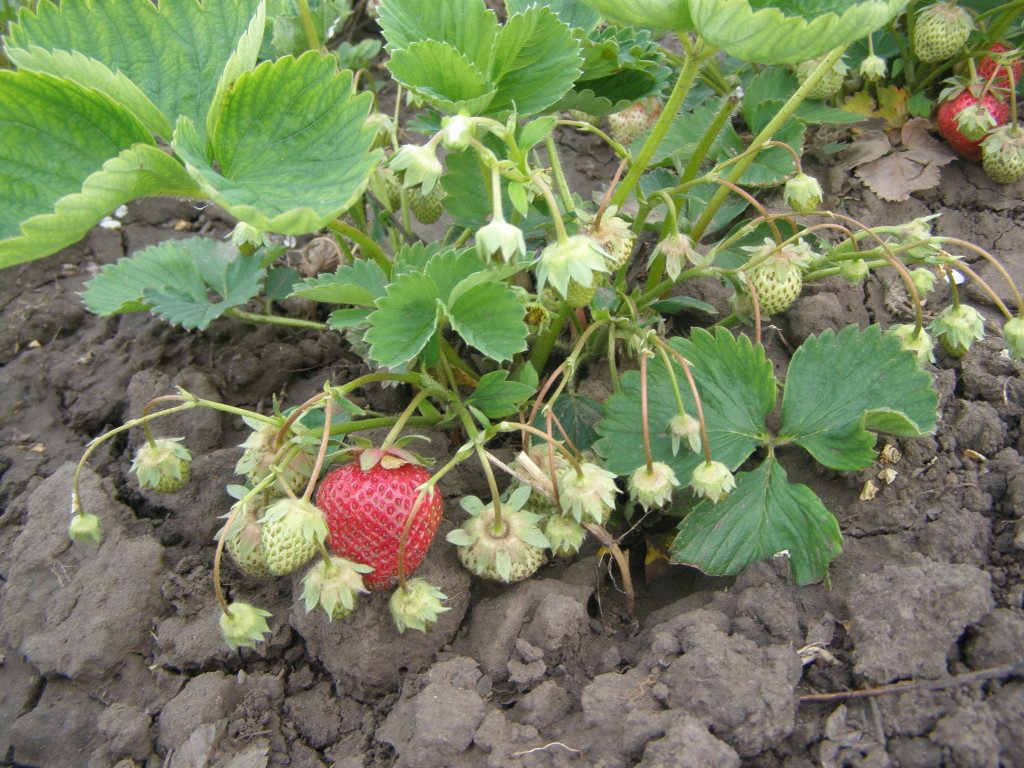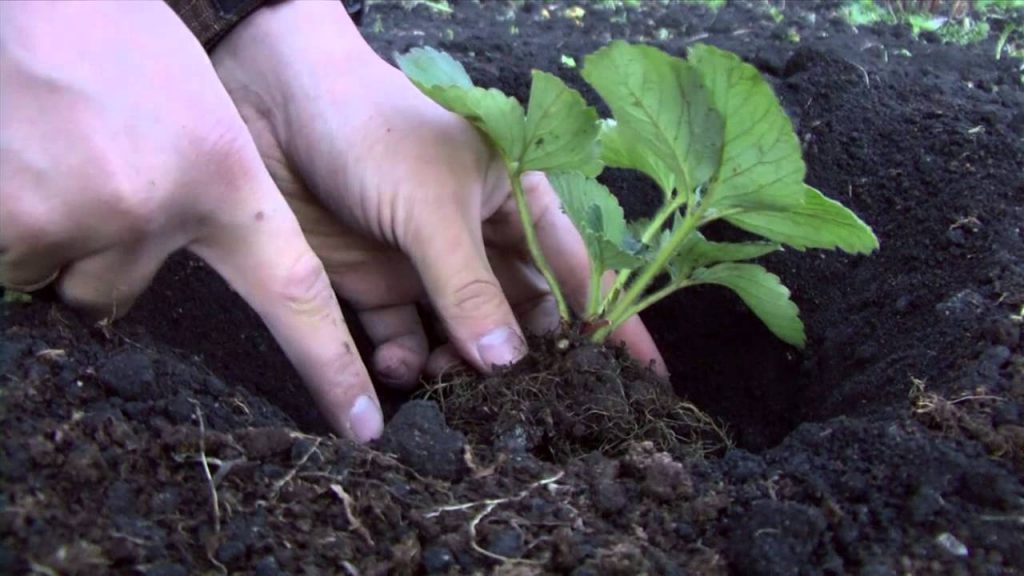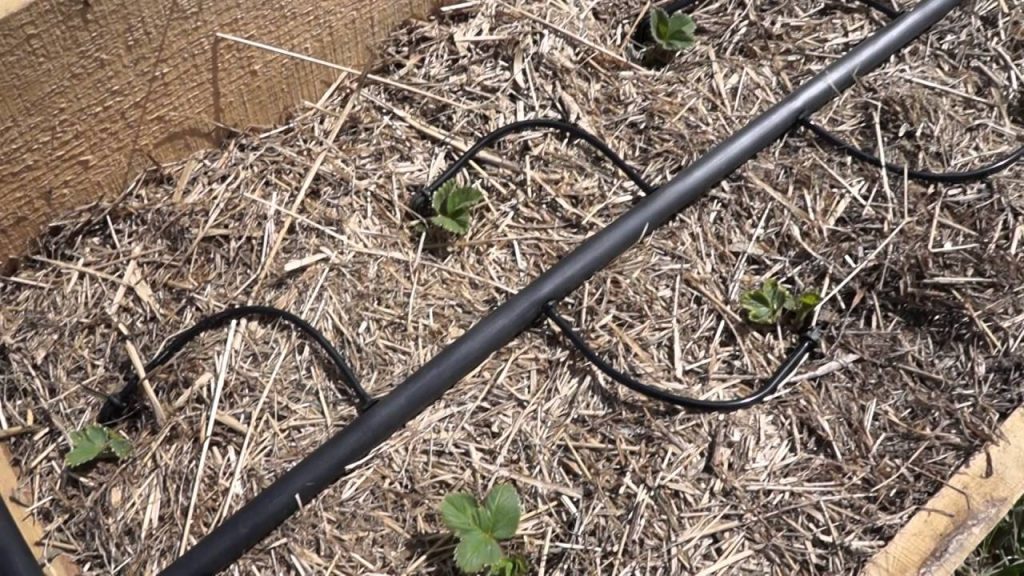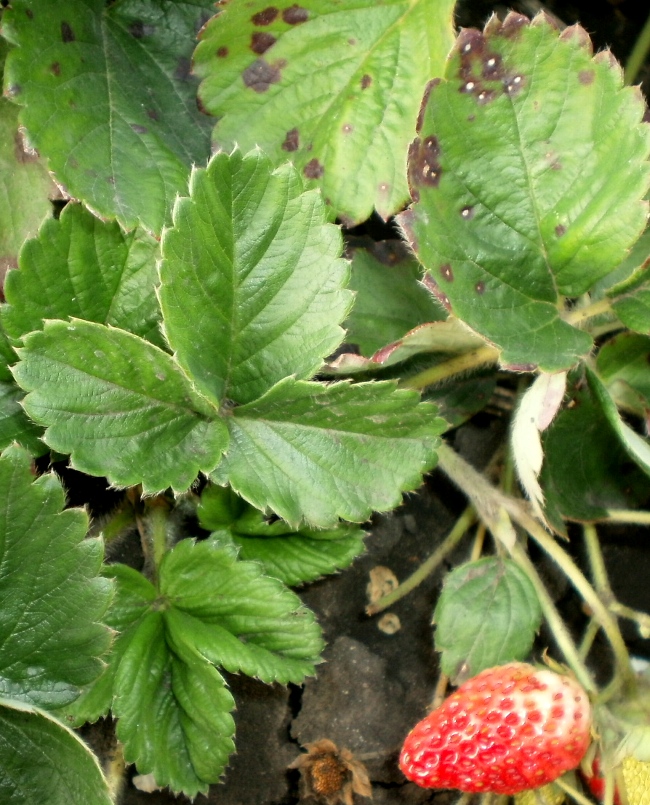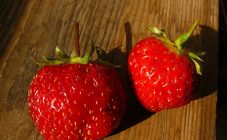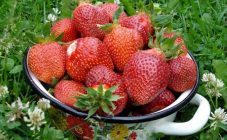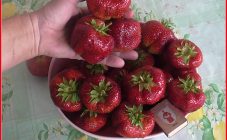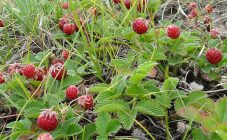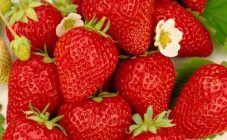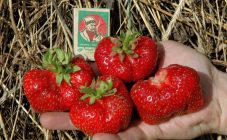Content:
Today, strawberries are one of the most popular berries in domestic dachas. Breeders are breeding more and more new types of crops. Perhaps one of the most unusual and memorable is Zenga Zengan's strawberry. Features of the variety and its cultivation are the topic of the article.
Zenga Zengana strawberry: description and characteristics of the variety
This variety belongs to the varieties of short daylight hours, late ripening. The garden strawberry was obtained by crossing an unnamed seedling with the Sieger variety in Germany (1954). The resulting variety immediately became widespread among gardeners, the culture is grown on an industrial scale.
Fruit buds for the formation of the crop lays with a short day, the duration of which is no more than 12 hours. Flowering is also carried out during a short daylight hours (no more than 14 hours per day). From the beginning of flowering to the moment of harvest, as a rule, it takes about a month. During one growing season, the culture bears fruit once in mid-June.
The fruits are large, the peel is quite dense. The main feature of the species is the versatility of the fruit (it can be consumed fresh and processed for making jam, jam, juices, the berries are also dried and frozen). The variety has good cold resistance, and also perfectly tolerates excess moisture during rains, just like the Zenkora strawberry, with which it is often confused.
Features of the strawberry variety:
- The bushes grow tall, but compact, the foliage is medium, the leaf plates are small. The whiskers are not formed very actively, the peduncles are located at the same level with the leaves or slightly below.
- Fruits, as they ripen, acquire a red uniform hue, there is a characteristic glossy sheen. With abundant light, cone-shaped berries can turn dark red. The pulp is sweet, firm and juicy, not prone to getting wet. Thanks to its structure, the harvested crop can be transported over long distances.
- The weight of the berry can reach 9-10 g, however, extremely large fruits can also be found - up to 30 g. By the end of fruiting, the weight of the berries decreases noticeably, but the taste and aroma become more intense.
- Taste is excellent, there is a characteristic sweet and sour taste. The fruit is characterized by a rich strawberry aroma.
- Abundance and regularity of fruiting: up to 1.5 kg of berries can be harvested from one bush.
- The abundance of fruiting does not depend on weather conditions, or rather, strawberries are not afraid of frosts, they tolerate drought much worse.
Care and landing
Zenga Zengana strawberries are not much different from the content of other varieties of strawberries. The plant needs bright sunlight and abundant watering, periodic application of mineral and organic fertilizers, as well as mulching and loosening the soil. When the first signs of the development of diseases are detected, the plantation must be immediately treated with special compounds. To prevent damage by various diseases or insects, insecticidal preparations are often used.
Landing rules
The optimal time for planting a crop is early spring or autumn. First of all, you need to choose a suitable landing site.It is recommended to give preference to a flat surface or a small slope located on the south side of the summer cottage. This is the main condition for the abundant fruiting of the culture. Landing should be carried out in the evening, when the weather is not sunny and dry.
Before planting, you must first prepare the soil in the planting pit. To do this, take into account the following recommendations:
- You need to inspect the soil for the presence of pest larvae. If they were found, then the earth should be disinfected using an ammonia solution (for 10 liters of water, 2 kg of the product).
- To get rid of weeds, it is recommended to weed the soil surface.
- It is important to add nutrients to the ground. A few weeks before the expected date of planting, potash fertilizers, superphosphate and humus must be added to the soil.
- You should also pay attention to the acidity of the soil. It cannot be increased. To normalize the indicator, dolomite flour is added to the soil.
Strawberry planting methods:
- Flameless is the most demanded method. Planting bushes is carried out by analogy with lowercase planting methods. There should be a black film on the soil between the rows. To prevent the plants from overheating, a layer of straw is laid on top of the material.
- One-line is to observe the interval between rows of 70 cm, and between the bushes at least 20 cm.
- Multi-line - planting bushes in one bed, but in several rows. The distance between them should be 70 cm, between the lines - 30 cm, and the bushes - 20 cm.
Landing Algorithm:
- Dig small planting grooves, water abundantly and lower the plant there.
- The central bud of each bush should be located above the soil surface, not level, not underground, but rise a few centimeters.
- As the depression falls asleep, compact the soil so that cavities do not form between the roots. After planting, the plant is poured abundantly with water and a layer of mulch is laid.
Watering
Before moistening the soil, be sure to loosen it. The optimal frequency of watering is 1-2 times a week. But here it is worth taking into account the frequency of precipitation. When watering, it is important that moisture does not get on the foliage. It is best to water the plants early in the morning or in the evening after sunset.
It is recommended to mulch the soil after each watering. For this, a layer of sawdust is laid in the aisles (at least 5 cm thick). It is also important to remove weeds in a timely manner and keep the beds clean.
Fertilization
The first top dressing is applied next year in the spring. After loosening the soil, nitrogen-containing fertilizers, such as urea, are introduced into the soil. With the formation of the first leaves, the culture is watered with a solution of ammonia sulfate, water and mullein. In early May, you can already use complex mineral fertilizers.
Before the bushes begin to bloom, during watering, a solution of nitrophoska or potassium sulfate can be added to the soil. After harvesting, it is recommended to use wood ash to recuperate.
Preparation for wintering
Before winter, near the plants, you need to loosen and weed the soil again. Next, it is worth treating the plantation with special compounds against diseases and pests, after which you can start removing greenery and mustache. The final stage is laying a layer of mulch. For this it is recommended to use peat or sawdust. If necessary, the culture is covered with burlap.
Diseases and pests
The culture of this variety can be affected by diseases and pests such as gray rot and strawberry mite. To prevent the development of undesirable phenomena, it is recommended to regularly treat the soil near the bushes with special compounds that can be purchased in a specialized store or on the market. You also need to closely monitor the condition of the plants. It is important that cobwebs do not form on them.The affected fragments of the bushes should be removed, collected and burned.
To reduce the likelihood of developing diseases, you must follow the rules for caring for the crop. Approximate schedule of preventive measures:
- In early spring, fungicide treatment is carried out (not only plants, but also the soil around it).
- Throughout the growing season, affected or damaged fragments of the bush are removed.
- Regular weed removal.
- Application of organic and mineral fertilizers.
- Another fungicide irrigation is due in late autumn.
Advantages and disadvantages of the variety
Zenga Zengana strawberries are unusual, but despite this, they are in great demand among domestic gardeners. This is due to the large number of advantages that more than cover the disadvantages. The main ones are:
- Under favorable weather conditions and observance of the rules of agricultural technology, the abundance of fruiting is very high: up to 1.5 kg of berries from one bush.
- Excellent indicators of cold resistance: the culture is able to withstand temperature drops down to -24 ° С.
- High adaptive properties.
- Possesses good resistance to diseases affecting the root system of bushes.
- The tasters rated the palatability of the fruit at 5 points out of 5.
- On one plantation, subject to the rules of care, the bushes are able to bear fruit abundantly for 6 years.
- The structure of the berry flesh makes strawberries ideal for freezing.
- Can be transported.
- Grown on an industrial scale.
The disadvantages of the variety include susceptibility to leaf spot, gray rot and strawberry mite damage.
Zenga Zengan strawberries are undemanding to grow, therefore, they will not take much effort and money even from a novice gardener. If you follow the rules of agricultural technology, a fragrant berry harvest will not take long.
